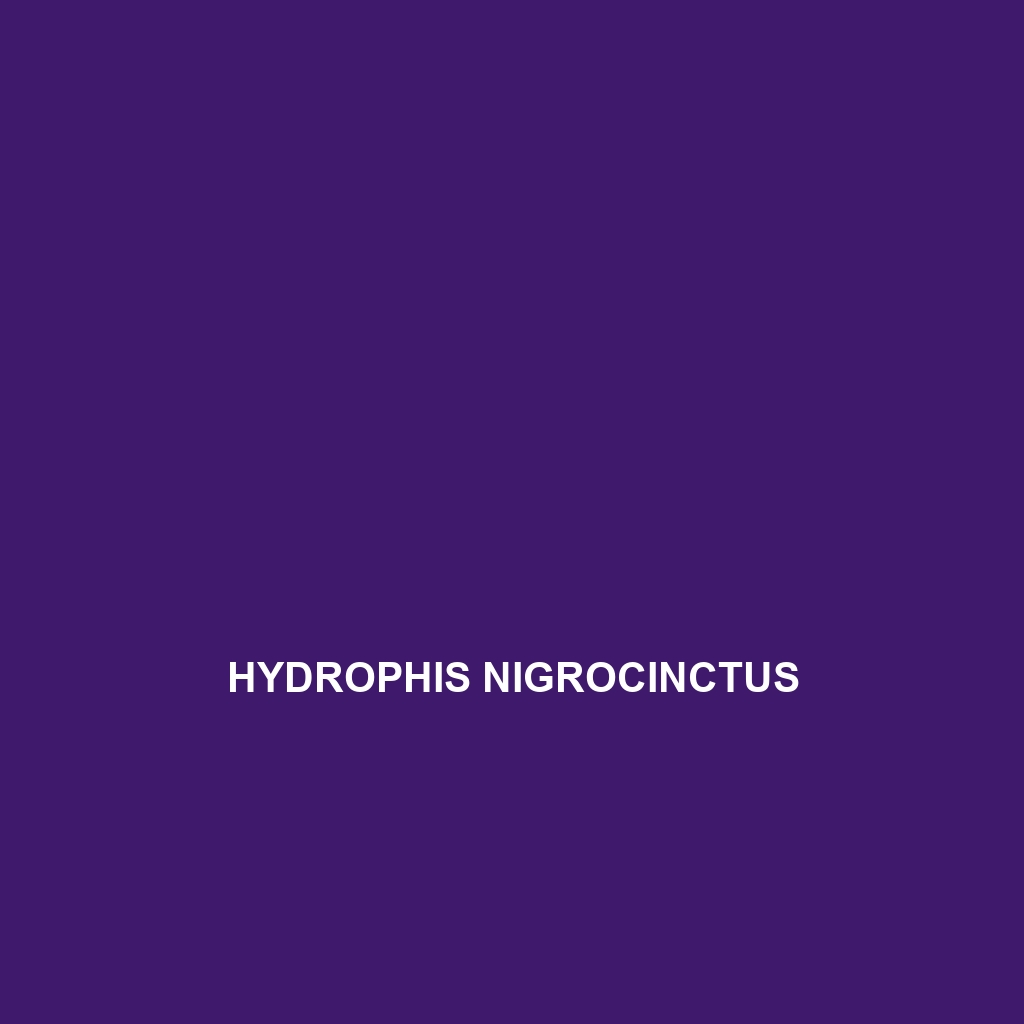The Hydrophis ocellatus, or spotted sea snake, is a carnivorous marine species characterized by its elongated, paddle-like body, dark oval spots, and strong swimming abilities. Primarily found in tropical waters of the Indian Ocean and Western Pacific, it plays a critical role in marine ecosystems by regulating fish populations and thriving in diverse aquatic habitats.
Tag: marine biodiversity
Hydrophis melanosoma
<strong>Hydrophis melanosoma</strong>, commonly known as the black sea snake, is a diurnal marine reptile found in the warm coastal waters of the western Pacific Ocean. This species features a streamlined body, measuring 1.6 to 2.4 meters, with striking black or dark brown coloration and plays a vital role in regulating marine ecosystems as both predator and prey.
Hydrophis melanocephalus
<b>Hydrophis melanocephalus</b>, commonly known as the black-headed sea snake, is a diurnal, ovoviviparous predator found in the warm coastal waters of the Indian and Pacific Oceans, primarily preying on fish and eels. This striking snake can grow up to 1.5 meters (about 5 feet) in length, featuring a black or dark brown head with a lighter body and plays a crucial role in maintaining the balance of marine ecosystems.
Hydrophis major
<p><b>Hydrophis major</b>, commonly known as the greater sea snake, is a slender, aquatic reptile inhabiting the shallow coastal waters of the Indo-Pacific region, characterized by its unique paddle-like tail and a diet primarily consisting of fish and eels. While classified as "Least Concern," this species plays a vital role as a predator in marine ecosystems, helping to regulate fish populations and indicating the overall health of its habitat.</p>
Hydrophis lamberti
<strong>Hydrophis lamberti</strong>, commonly known as Lambert's sea snake, is a sleek, bluish-grey marine reptile found in the shallow waters of the Indo-Pacific, known for its distinctive flattened body and paddle-shaped tail. This carnivorous species plays a crucial role in maintaining marine biodiversity by preying on small fish and crustaceans, and it exhibits fascinating reproductive traits by giving birth to live young.
Hydrophis laboutei
Common Name Hydrophis laboutei Scientific Name Hydrophis laboutei Habitat Hydrophis laboutei, commonly known as the Laboute’s sea snake, is primarily found in the tropical and subtropical marine habitats of the Indian and Pacific Oceans. This species thrives in warm waters, specifically along coastal areas, coral reefs, and estuaries. Typical geographic regions include the waters around […]
Hydrophis kingii
Discover the Hydrophis kingii, or King's sea snake, a striking marine predator found in the shallow waters of Southeast Asia, known for its elongated body, vibrant coloration, and unique paddle-shaped tail. This fascinating species thrives in coral reefs, primarily feeding on fish and eels while playing a vital role in maintaining the ecological balance of its habitat.
Hydrophis inornatus
<p><b>Hydrophis inornatus</b>, commonly known as the Plain Sea Snake, is an agile marine predator found in warm coastal waters of the Indo-West Pacific, featuring a slender body up to 1.2 meters in length and a diet of small fish and invertebrates. This ovoviviparous species plays a vital role in its ecosystem, controlling prey populations while demonstrating remarkable adaptations for an aquatic lifestyle.</p>
Hydrophis hardwickii
<p>Discover the <b>Hydrophis hardwickii</b>, or Hardwicke's sea snake, a striking marine predator native to the Indian and Pacific Oceans, known for its slender body, paddle-shaped tail, and nocturnal hunting behavior. This unique species thrives in warm, shallow waters and plays a vital role in maintaining the balance of marine ecosystems.</p>
Hydrophis hendersoni
Introducing the Hydrophis hendersoni, commonly known as Henderson's sea snake, a medium-sized marine predator found in the warm tropical waters of the Indo-Pacific. With its slender body, distinctive bluish-grey coloration, and paddle-like tail, this adaptable species plays a crucial role in maintaining marine ecosystem balance by preying on fish and eels.








